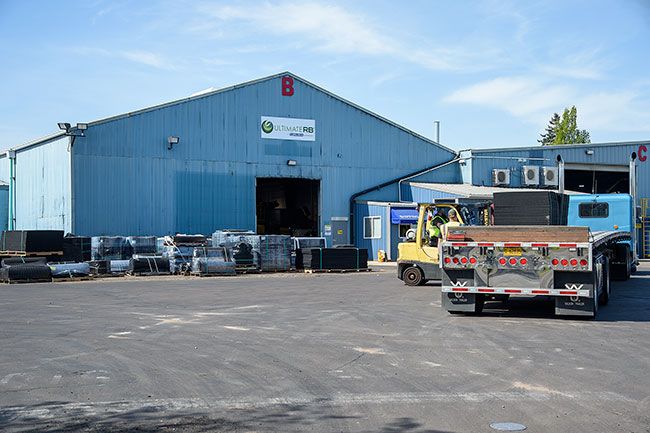City moving with purpose on Alpine redevelopment

When the late Ron Bogh bought John Klaus’ one-man tire recycling operation in 1985 — and it began operating under his initials, first as RB Rubber and later as Ultimate RB — he had every intention of expanding its footprint.
But he could never have imagined the city of McMinnville one day paying more than $4 million for his newly abandoned Alpine Avenue manufacturing site, envisioning its transformation into the mixed commercial and residential crown jewel of the city’s original industrial sector.
If there’s a common chord here, it’s this:
Bogh’s obituary of December 2020 noted, “He taught his family to not be afraid of taking risks.” And under the leadership of City Manager Jeff Towery, the city is doing just that on a rather grand scale.
They are calculated risks with the potential for a big payoff, though. If the city achieves even a reasonable facsimile of Bogue’s success, it will some day be heralded, as Bogh was, for its visionary acumen.
The youngest of eight, Bogh was born to a Portland family relocating first to Sheridan, then McMinnville. After graduating from Mac High, he pursued shipyard work, served in the Army, then did stints with Skyline Mobile Homes, Cascade Steel and White Top Transport by turn. Along the way, he made his junior high sweetheart his lifelong partner.
Within 10 years of embarking on his new venture, turning old tires into rubber matting, flooring and playground surfacing, he took the company public. At its peak, it was providing more than 100 family-wage jobs.
The operation ultimately fell victim to its own success.
It was first sold to Multi-Dash Corp., which chose distant sites to support a national expansion bid. Dash then sold the operation to Arsenal General, a private equity firm with other interests in the field.
By the time new owners no longer saw a future in the aging McMinnville plant, its home Alpine District had become a hotbed of renewal and rebirth. And an urban renewal district formed 10 years ago provided means to give the process a major jump start on the 3.25-acre manufacturing site.
We see several things to like in the process as it is now beginning to play out. For starters, the city was able to finance the purchase via a five-year intergovernmental loan from its sewage treatment capital fund.
Repayment is limited to interest only for the first four years, which the urban renewal district will be covering. That gives it plenty of time to choose a developer, settle on a development plan and negotiate a sale serving to recoup the lion’s share of its investment.
The city is moving swiftly, with an eye to issuing a formal request for proposals by June1, if not earlier. Major projects like this take time to come together, so it’s vital to get off to a quick start.
Wisely, it is sticking to establishing broad parameters, leaving the details, including the ultimate price point, to be negotiated with the developer making the final cut. And commendably, it is already moving to build in meaningful public involvement, starting with what it’s billing as a “design charrette,” tentatively slated for March.
There are two major components of the urban renewal district — the downtown core and the Northeast Gateway District, which includes the Granary and Alpine areas.
We think the city should do everything possible to tie them together for motorists, cyclists and pedestrians. And we have one suggestion for that: exploring the possibility of opening the no longer used rail corridor between Third and Fifth streets to bike and foot traffic.
Would the railroad be amenable to development of a corridor open to public use? The potential seems to us well worth exploring.
In today’s fast-moving, ever-changing world, it’s a fool’s errand to stand pat. If you aren’t moving forward, you are effectively resigning yourself to falling back.
Pursued with thought and purpose, public initiative can provide the impetus for a rich vein of private investment. We see reasonable prospects for that proving the case here.








Comments